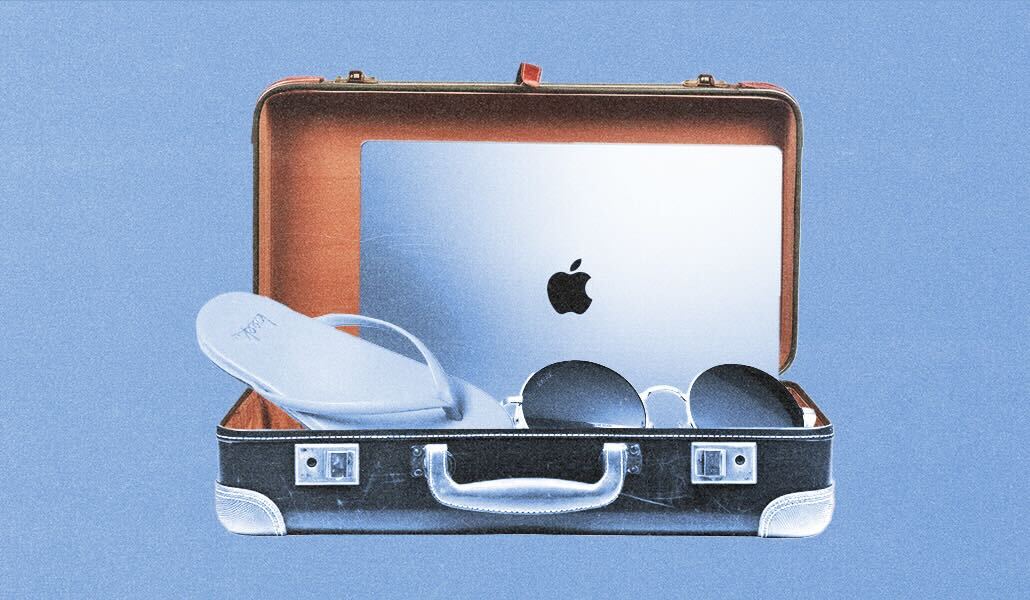Need a break? Microretirement may be the answer

Feeling burned out? Or simply need a change or a new adventure? Try microretirement.
Unlike conventional retirements or the growing phenomenon of “unretirement,” where retirees go back to work, microretirement is taking strategic career breaks during one’s working life. The approach is gaining traction among workers of all ages, especially younger ones — this, despite warnings by financial experts that such breaks could cost employees up to $600,000 in future retirement savings.
HR departments can play a vital role in supporting employees considering microretirements.
“By fostering open communication, offering flexible work arrangements and providing career development resources, people teams can help employees make informed decisions and return to work refreshed and recharged,” said Mary Jenson, director of people and culture at marketing agency Barbarian — who believes that by embracing the concept, organizations can create a more supportive and empathetic work environment, leading to greater employee satisfaction and productivity.
Industries that enable employee microretirements typically share key characteristics: they offer flexible scheduling, remote work capabilities, project-based work structures and significant individual autonomy. Those qualities allow workers to temporarily step away while preserving their professional roles and responsibilities. Examples include tech companies, consulting firms, creative fields (like design and writing), certain healthcare positions, educational institutions and professional service organizations.
The timing is significant. According to a survey last April by the American Staffing Association (ASA) and The Harris Poll, 43% of U.S. workers report feeling burned out, yet nearly half (47%) would hesitate to admit it to their supervisors. Their reluctance to talk about workplace stress, combined with employers’ growing focus on mental health, has many employees seeking alternative ways to manage their work lives.
“As the generations mix and mingle in the workplace, it doesn’t surprise me that Gen Z’s desire for flexibility at work is rubbing off on millennials and, more so, Gen X,” said Eric Mochnacz, director of operations at HR consultancy Red Clover.
Mochnacz notes that while previous generations were taught to “get a degree, get a job, and work for that employer for your entire life until you can retire,” the reality of the working world has changed. “As we’ve seen since 2020, employer loyalty only goes so far — and even then, with costs increasing, the idea of fully retiring seems like more of a pipe dream,” he said.
Economic uncertainty is another key driver, according to Justina Raskauskiene, HR team lead at ecommerce marketing platform Omnisend. “Job market shifts, inflation and unpredictable industry trends are making people question if their current direction supports their long-term goals,” she said. “Ironically, it often makes a career break feel safer than pursuing an unfulfilling career.”
However, experts caution that microretirement requires careful planning on the part of the employee.
“A long career gap can sometimes make it difficult to re-enter the workforce, especially in areas with rapidly changing technological advancements,” said Stephen Dwyer, president of the ASA. Microretirees may also lose out on retirement contributions and income they would have received had they chosen to stay in the workforce, he added. “It’s up to each individual to decide if the benefits of a microretirement outweigh the drawbacks.”
When planning for any type of leave, the employee needs to make sure that it is financially feasible, stressed Mochnacz. That includes having sufficient savings and understanding the impact on benefits and retirement planning.
Before taking any extended break, employees ought to consider several factors other than financial. Company policy is one. Not all organizations are equipped to handle microretirements. Some may offer sabbaticals, but those typically last just a few weeks, whereas microretirements tend to be longer. Employees should investigate their employers’ policies regarding extended leave and whether their positions would be protected, according to workplace experts.
Raskauskiene emphasizes planning for reentry into the workplace as well. “Set a timeline for when you’ll rejoin the job market and think of alternative income sources,” she said. “Freelancing or even a passion project will help you to stay professionally sharp.”
Meanwhile, for employees, the biggest risk might be psychological rather than professional. “The greatest risk is over-idealizing the break,” Raskauskiene said. “Many people expect it to be transformative, but without a routine or a challenge, it can quickly make you feel unfulfilled.”
For employers as well, microretirements present opportunities and challenges. They can serve as a tool for preventing burnout, bolstering benefits offerings and boosting hiring and retention. “It’s an intentional, structured break without the pressures often associated with shorter time off, such as the fear of appearing uncommitted,” as Raskauskiene put it.
On the other hand, the impact on company resources can be considerable. Employers must manage temporary staffing gaps, redistribute workloads and handle potential disruptions to team dynamics. There’s also the risk that an employee who takes a break might not return, requiring companies to recruit and train new staff.
The future of microretirement remains uncertain, particularly given economic unknowns. In a survey of 1,000 U.S. residents aged 60 to 65 years old, Nationwide found that nearly one-third of retirees would consider rejoining the workforce if inflation continued to rise and one-quarter would return if Social Security ends up not covering their expenses.
Those findings suggest that while microretirement may offer temporary relief from workplace stress, it also requires careful thought about the long term.
Another warning: microretirements are temporary. Those who opt for a break should remember to not burn their bridges. “Make sure you leave your current job on good terms,” said Raskauskiene. “Staying connected to your network and keeping informed about opportunities can make the re-entry smoother.”

